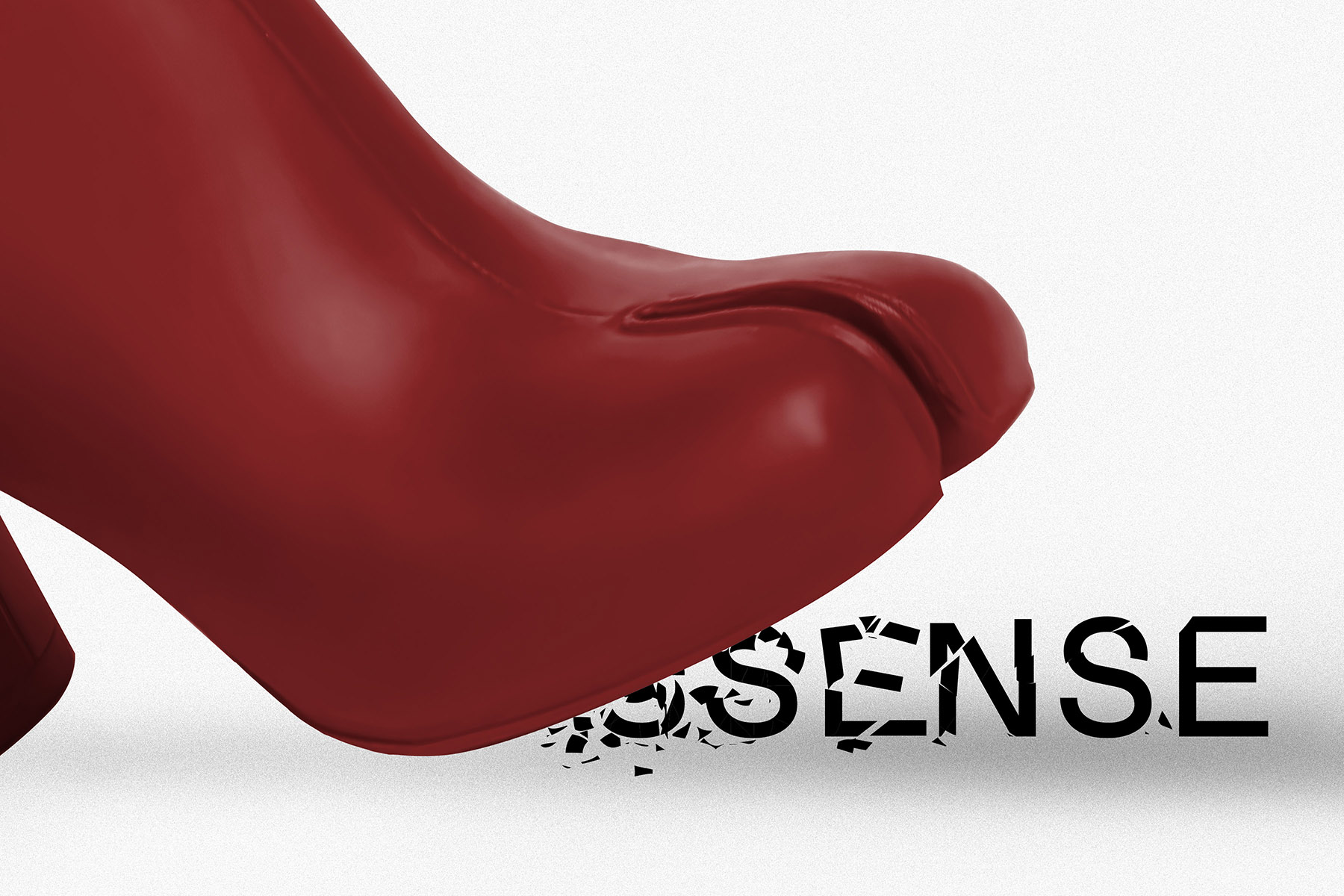Lifestyle
Ssense Faces Bankruptcy After Rapid Rise and Fall in Retail

Ssense, a Canadian multi-brand e-tailer once celebrated as a leader in luxury fashion for Gen Z, is grappling with bankruptcy after significant financial setbacks. The crisis began in August 2025 when a creditor sought to sell the company, leading to what Ssense described as an “immediate liquidity crisis.” Following this alarming development, the Superior Court of Quebec granted the company temporary protection, allowing it to continue operations while restructuring.
For over a decade, Ssense thrived by appealing to a younger demographic, particularly those aged between eighteen and forty. The company’s advertising strategy, marked by a humorous and meme-centric tone, resonated with Gen Z consumers who dominate online shopping. At its peak valuation of approximately $4.1 billion in 2021, Ssense attracted minority investment from Sequoia Capital. This success, however, proved fleeting as economic pressures began to mount.
The pandemic initially boosted online retail, but subsequent consumer spending declines have severely impacted luxury e-commerce. Sales in the fashion and leather goods sector of luxury conglomerate LVMH fell by 9 percent in the second quarter of 2025, and reports indicate that 50 million consumers reduced their luxury spending in the preceding year. As many retailers faced similar challenges, Ssense’s financial struggles intensified.
Founded by the Atallah brothers—Rami, Firas, and Bassel—in Montreal in 2003, Ssense began as a family business. The trio, who emigrated from Syria as teenagers, relied on their parents’ mortgaged home to launch the company. Initial efforts focused on establishing a physical store to build a reputation, followed by the website’s launch in 2006. Rami Atallah’s background in computer engineering played a crucial role; the website’s development was his graduate thesis.
This tech-oriented approach, along with a keen ability to identify emerging brands, contributed to Ssense’s early success. By 2010, the site attracted 1 million visitors monthly, and by 2018, this figure had risen to 13 million. The company’s growth was bolstered by its ability to mix well-known designers with lesser-known talents, positioning itself as a fashion disruptor.
Despite its innovative model, the company faced criticism for its reliance on a younger consumer base. As Bain & Company predicted in 2021, Gen Y and Gen Z were expected to constitute 70 percent of the luxury market by 2025. However, concerns were raised about the sustainability of this approach, particularly as younger shoppers faced financial pressures.
In a stark reality, the post-pandemic market shift caught many retailers off-guard. Martin, a former employee, noted a lack of caution in buying practices as the company aggressively sought to capitalize on ongoing trends. “The expectation was that the growth was going to continue after lockdown restrictions were lifted,” he explained. The shift in consumer behavior left Ssense and similar retailers in a precarious position.
As financial woes escalated, Ssense implemented several rounds of layoffs, cutting 8 percent of its workforce in May 2025, following a 7 percent reduction earlier that year. By October 2024, Martin reported that around 250 to 300 employees had been let go across various departments. This trend mirrored broader challenges in the luxury retail sector, where other companies also struggled to maintain profitability.
Critics argue that Ssense’s aggressive sales tactics have harmed smaller retailers who cannot compete with the significant discounts offered by the e-tailer. Reports indicate that many brands have faced delayed payments as cash flow issues have plagued the company. Jules, a sales agent who collaborates with fashion brands, expressed concern over the worsening situation, noting that the accounts department’s responsiveness had declined significantly.
As the landscape of online retail continues to evolve, shifts in consumer preferences are becoming increasingly apparent. A growing number of Gen Z shoppers are gravitating towards vintage and second-hand items. A 2023 report revealed that 58 percent of Gen Z consumers had purchased second-hand goods, indicating a shift away from traditional luxury retail.
The recent financial troubles of Ssense raise critical questions about the future of online fashion retail. As competitors like Mytheresa report rising sales, the e-tailer’s ability to adapt to changing market conditions remains uncertain. With consumers increasingly seeking unique and sustainable options, the path forward for Ssense and similar brands will require reevaluation of their business models and strategies.
In summary, Ssense’s journey from a celebrated disruptor to a company facing bankruptcy encapsulates the volatile nature of the online luxury market. As it navigates this challenging period, the outcome will significantly impact not only the brand but also the broader fashion retail landscape.
-

 Lifestyle2 months ago
Lifestyle2 months agoWinnipeg Celebrates Culinary Creativity During Le Burger Week 2025
-

 Health2 months ago
Health2 months agoMontreal’s Groupe Marcelle Leads Canadian Cosmetic Industry Growth
-

 Science2 months ago
Science2 months agoMicrosoft Confirms U.S. Law Overrules Canadian Data Sovereignty
-

 Education2 months ago
Education2 months agoRed River College Launches New Programs to Address Industry Needs
-

 Technology2 months ago
Technology2 months agoDragon Ball: Sparking! Zero Launching on Switch and Switch 2 This November
-

 Science2 months ago
Science2 months agoTech Innovator Amandipp Singh Transforms Hiring for Disabled
-

 Technology7 days ago
Technology7 days agoDiscord Faces Serious Security Breach Affecting Millions
-

 Technology2 months ago
Technology2 months agoGoogle Pixel 10 Pro Fold Specs Unveiled Ahead of Launch
-

 Science2 months ago
Science2 months agoChina’s Wukong Spacesuit Sets New Standard for AI in Space
-

 Technology2 months ago
Technology2 months agoWorld of Warcraft Players Buzz Over 19-Quest Bee Challenge
-

 Business2 months ago
Business2 months agoDawson City Residents Rally Around Buy Canadian Movement
-

 Technology1 week ago
Technology1 week agoHuawei MatePad 12X Redefines Tablet Experience for Professionals
-

 Education2 months ago
Education2 months agoAlberta Teachers’ Strike: Potential Impacts on Students and Families
-

 Business2 months ago
Business2 months agoNew Estimates Reveal ChatGPT-5 Energy Use Could Soar
-

 Science2 months ago
Science2 months agoXi Labs Innovates with New AI Operating System Set for 2025 Launch
-

 Technology2 months ago
Technology2 months agoInnovative 140W GaN Travel Adapter Combines Power and Convenience
-

 Technology2 months ago
Technology2 months agoFuture Entertainment Launches DDoD with Gameplay Trailer Showcase
-

 Technology2 months ago
Technology2 months agoGlobal Launch of Ragnarok M: Classic Set for September 3, 2025
-

 Technology2 months ago
Technology2 months agoArsanesia Unveils Smith’s Chronicles with Steam Page and Trailer
-

 Technology2 months ago
Technology2 months agoNew IDR01 Smart Ring Offers Advanced Sports Tracking for $169
-

 Science2 months ago
Science2 months agoNew Precision Approach to Treating Depression Tailors Care to Patients
-

 Business2 months ago
Business2 months agoBNA Brewing to Open New Bowling Alley in Downtown Penticton
-

 Technology2 months ago
Technology2 months agoHumanoid Robots Compete in Hilarious Debut Games in Beijing
-

 Health2 months ago
Health2 months agoGiant Boba and Unique Treats Take Center Stage at Ottawa’s Newest Bubble Tea Shop










